From the dark forest we see glowing eyes peering out at us. Mere meters away, our lights reveal a massive black beast through the trees. As it slowly turns to face us, we see its enormous curved horns.
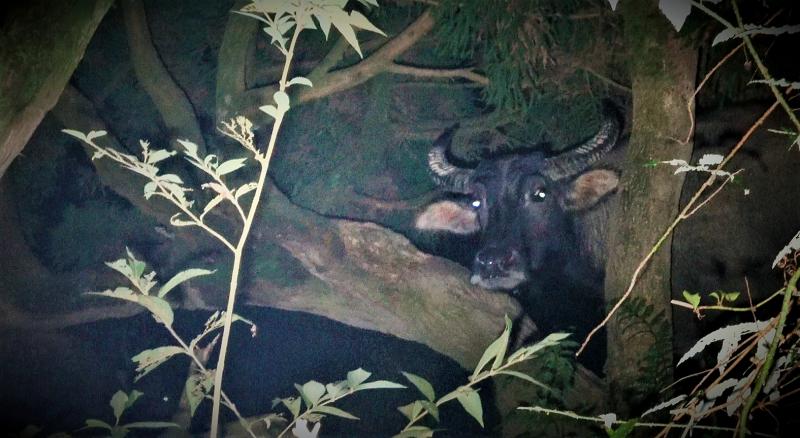
Photo: James Osborne
These are creatures we had hoped to see on this stage of the hike, but not not so close. We quickly and cautiously move a safer distance down the trail, hoping they will not charge at us — as they’ve done with other hikers, most recently killing one in January.
Throughout the night, owls hoot and fly over-head, while flying squirrels clamber around in the trees. A highly venomous many-banded krait scurries across the path in front of us. It is no wonder so many spooky tales are set in forests at night.
The third section of the 92km Taipei Grand Trail (台北大縱走) is proving to be just as thrilling as we could hope, but we are in for a long night.
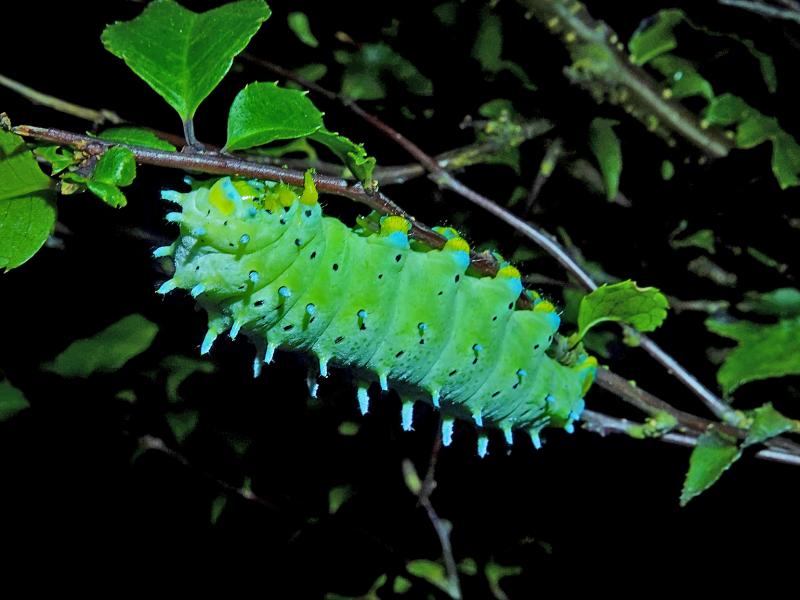
Photo: James Osborne
STAGE THREE
Having spent the whole afternoon navigating a logistical nightmare of taxis and buses, and getting our vehicles parked at the end of the trail, we arrive right before dusk at the iconic fumaroles at Xiaoyoukeng (小油坑). Great plumes of steam rise up from cracks in the dormant volcano, filling the air with the smell of rotten eggs.
From here we begin our steep ascent up to Qixingshan (七星山). Our eyes are set toward the Qingtiangang Grasslands (擎天崗大草原), then on all the way back down to our motorbikes at Fengguizui (風櫃嘴). At about 14km in length, tonight’s stage of the Taipei Grand Hike is the longest.
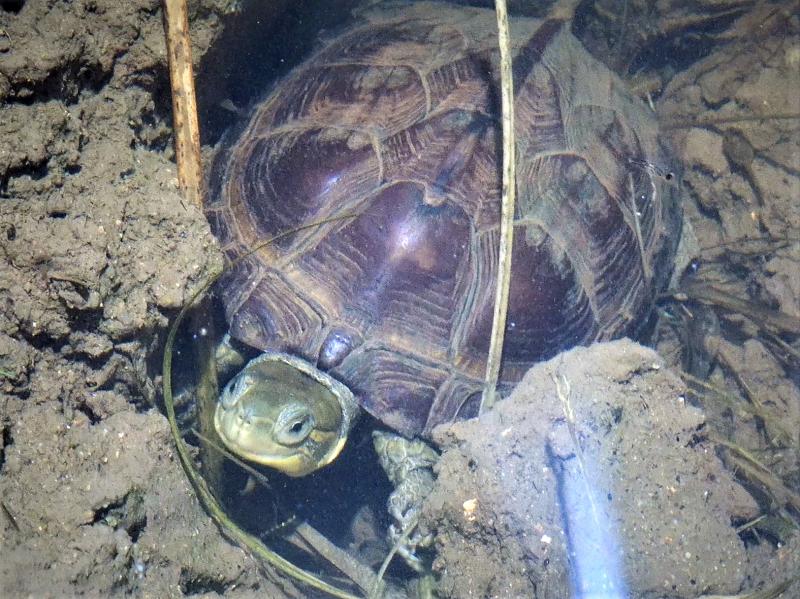
Photo: James Osborne
Soon the Mid Autumn Festival full moon fills the night sky, making the silvergrass flowers glint in the moonlight as they tower high on either side of the trail. With a smaller team of only four, we quickly but carefully climb the stone staircase to meet our fifth member, an entomology student named Janus, at the summit. He had gone ahead on a futile mission to film the sunset, on what became a cloudy evening.
The city lights of Taipei illuminate the darkness far below. Having convened with our final team member at the peak, he points out an iridescent ground beetle running in circles. We get a quick selfie at the summit marker while trying not to bother the dozens of moon gazers, then begin our descent back toward the forest.
We soon encounter our usual forest friends; Japalura lizards asleep in the branches, a giant stick insect crawling on a fern and a green tree viper lurking among the foliage.
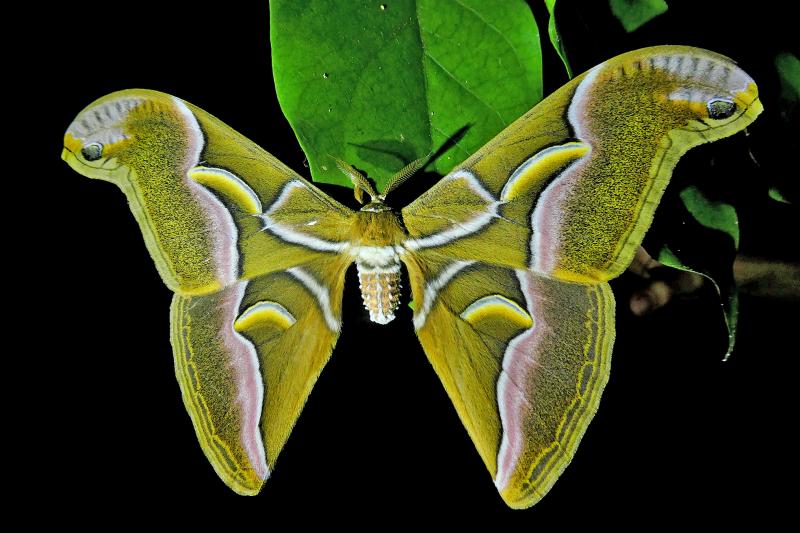
Photo: James Osborne
“Wow, check this out,” exclaims Janus, spotting some large and colorful caterpillars on a trail-side bush. These will soon turn into one of the world’s largest and charismatic moths; the lesser atlas moth.
THE GRASSLANDS
A vast expanse of darkness surrounds us as we cross the swing-bridge at Lengshuikeng (冷水坑). Soon we pass an ancient stone structure reclaimed by the forest; an old ruined cow shed. The grasslands must be near. A greater green snake watches us from its perch in a tree as Janus once again cries out in excitement.
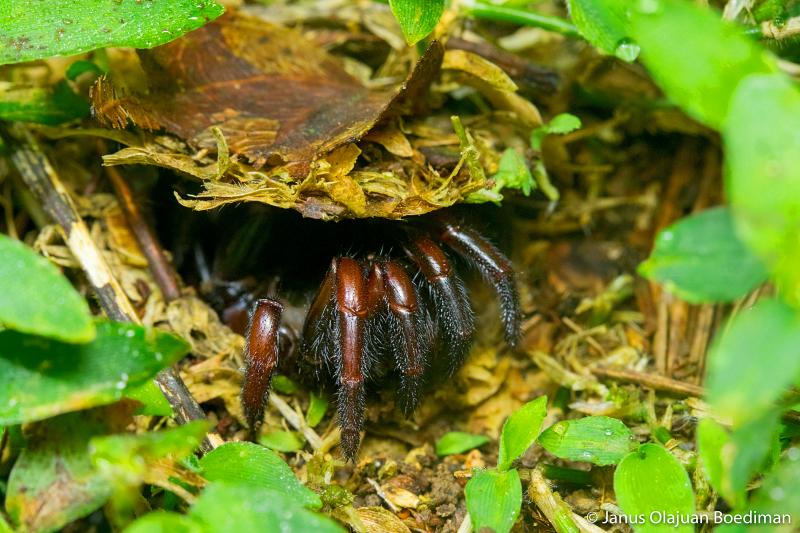
Photo courtesy of Janus Olajuan
In anticipation we crouch down beside him to try and see what it is. A large trapdoor spider pokes its head out from beneath its camouflaged trapdoor.
“They use a fine web tripwire to detect passing prey,” he says.
The grasslands feel like another world at night. Our lights reveal a snaking trail ahead, while all around seems like an infinite sea of darkness. The air is filled with the sounds of crickets and frogs.
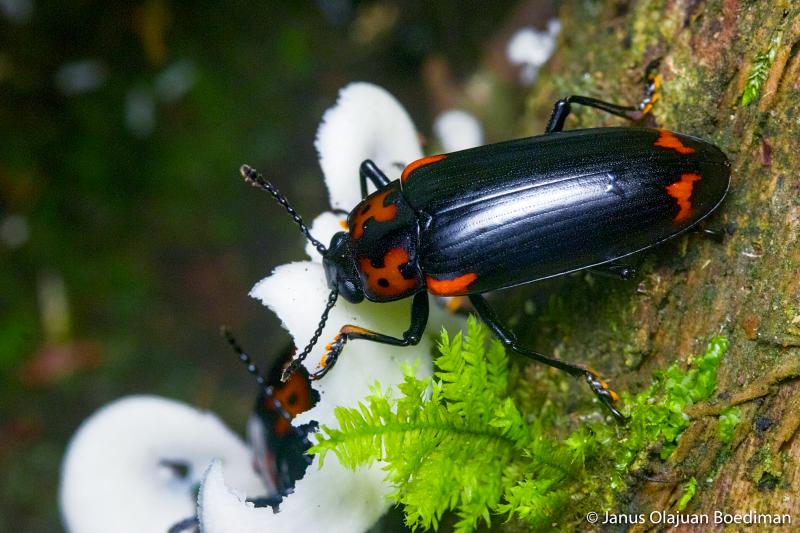
Photo courtesy of Janus Olajuan
Before long, patches of forest break up the stretches of open grass. After entering a stretch of forest we notice a glint of light in among the trees. “Wow,” exclaims Monica as our flashlights expose an enormous semi-wild buffalo standing between some trees.
We soon spot two more. The darkness and their proximity makes them seem gigantic. Their large horns and eyes still glowing in the reflected flashlights, makes them frightening to behold. After snapping a few shots, and admiring these incredible creatures, we decide it is safer to move on.
As the forest opens to grassland again, we see buffalo warning signs and safety barriers to escape a charging bull. Soon more glowing eyes reveal more water buffalo grazing in the open grass. Although used to passing hikers, they can be dangerous.
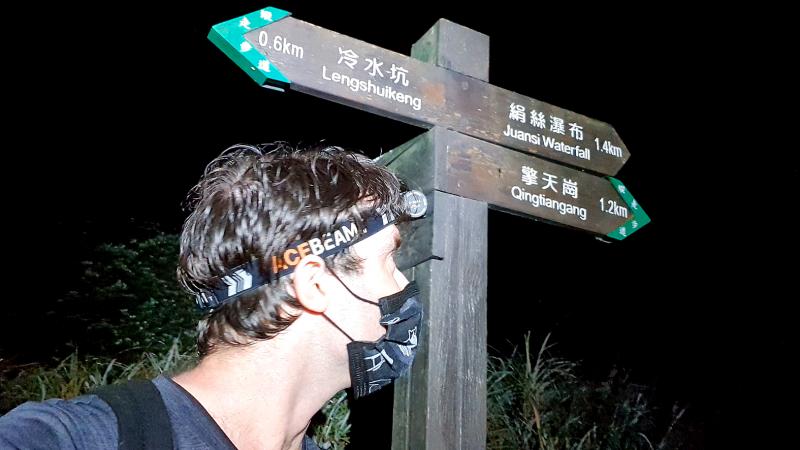
Photo: James Osborne
THE FINAL HAUL
Before we enter the forest for the final descent to Fengguizui, we pass five wild turtles. A green tree viper watches over a frog in another forest pool.
Soon our legs become weary and we try not to stumble on the slippery stone path as fatigue grips us. Once again our entomologist cries out in excitement. He has found some black and red beetles eating mushrooms on a log. They are interesting beetles, but it’s his enthusiasm that keeps us going.
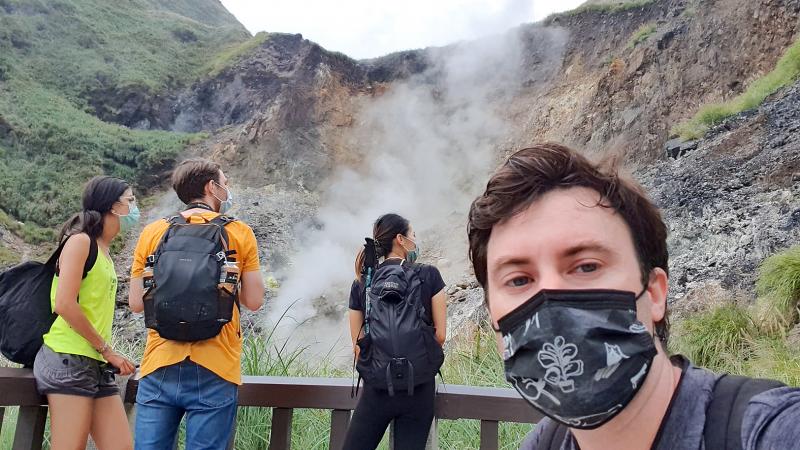
Photo: James Osborne
After a grueling nine and a half hours on the trail, a big Formosan toad sits beside the final marker to cheer our completion of stage three. With sore feet and wobbly knees, we clamber back onto our bikes. Satisfied, but with only our warm comfortable beds in mind, we head for home.
James Osborne has been living in Taiwan for about two years, where he has been pursuing a passionate hobby of discovering and filming Taiwan’s unique biodiversity. Check out his Youtube channel (James Osborne) for videos on his ecological adventures.
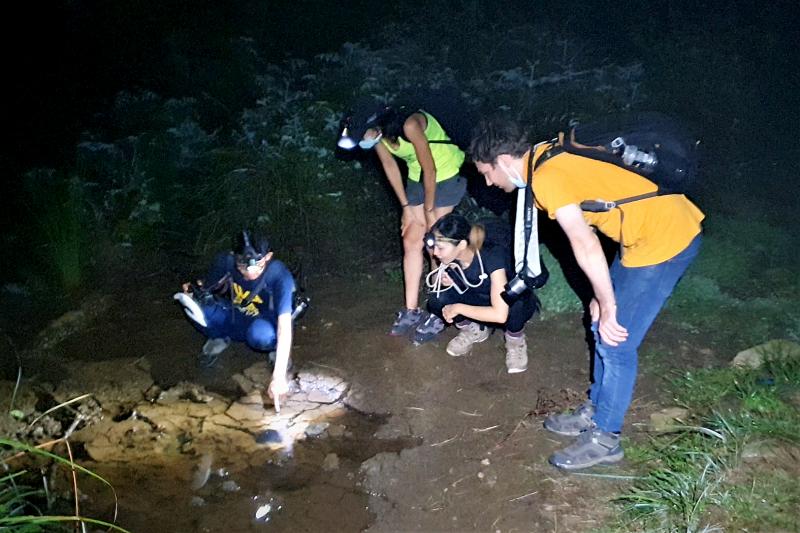
Photo: James Osborne

The slashing of the government’s proposed budget by the two China-aligned parties in the legislature, the Chinese Nationalist Party (KMT) and Taiwan People’s Party (TPP), has apparently resulted in blowback from the US. On the recent junket to US President Donald Trump’s inauguration, KMT legislators reported that they were confronted by US officials and congressmen angered at the cuts to the defense budget. The United Daily News (UDN), the longtime KMT party paper, now KMT-aligned media, responded to US anger by blaming the foreign media. Its regular column, the Cold Eye Collection (冷眼集), attacked the international media last month in

On a misty evening in August 1990, two men hiking on the moors surrounding Calvine, a pretty hamlet in Perth and Kinross, claimed to have seen a giant diamond-shaped aircraft flying above them. It apparently had no clear means of propulsion and left no smoke plume; it was silent and static, as if frozen in time. Terrified, they hit the ground and scrambled for cover behind a tree. Then a Harrier fighter jet roared into view, circling the diamond as if sizing it up for a scuffle. One of the men snapped a series of photographs just before the bizarre

Feb. 10 to Feb. 16 More than three decades after penning the iconic High Green Mountains (高山青), a frail Teng Yu-ping (鄧禹平) finally visited the verdant peaks and blue streams of Alishan described in the lyrics. Often mistaken as an indigenous folk song, it was actually created in 1949 by Chinese filmmakers while shooting a scene for the movie Happenings in Alishan (阿里山風雲) in Taipei’s Beitou District (北投), recounts director Chang Ying (張英) in the 1999 book, Chang Ying’s Contributions to Taiwanese Cinema and Theater (打鑼三響包得行: 張英對台灣影劇的貢獻). The team was meant to return to China after filming, but

Power struggles are never pretty. Fortunately, Taiwan is a democracy so there is no blood in the streets, but there are volunteers collecting signatures to recall nearly half of the legislature. With the exceptions of the “September Strife” in 2013 and the Sunflower movement occupation of the Legislative Yuan and the aftermath in 2014, for 16 years the legislative and executive branches of government were relatively at peace because the ruling party also controlled the legislature. Now they are at war. The Democratic Progressive Party (DPP) holds the presidency and the Executive Yuan and the pan-blue coalition led by the